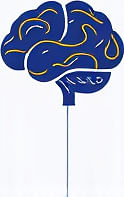Mind Mapping as a Tool for Neurodiversity in Remote Work
 by Verner Mayer
by Verner Mayer
Discover how mind mapping supports adults with ADHD or autism in remote settings, offering strategies for better focus and balance. This approach helps organize thoughts and tasks, leading to improved productivity without added stress.

Many adults with neurodivergent conditions like ADHD or autism find remote work challenging due to distractions and the need for clear structure. Mind mapping emerges as a helpful technique to organize ideas visually. This method uses diagrams to connect thoughts, making it easier to manage daily tasks.
One key advantage of mind mapping is its ability to break down complex projects. For someone with ADHD, mind mapping can turn a large assignment into smaller, manageable parts. Imagine starting with a central idea and branching out to related tasks; this visual layout reduces mental clutter and boosts focus.
In remote environments, maintaining routines is essential. Mind mapping allows individuals to create daily plans that include work duties and personal time. For example, a person with autism might use it to schedule breaks, ensuring they avoid burnout. This practice promotes a healthier work-life balance by clearly outlining priorities.
To begin with mind mapping, select simple tools. Paper and markers work well for a hands-on approach, while digital options like apps provide flexibility. Start by placing your main goal in the center and add branches for sub-tasks. This step-by-step process helps build habits that support productivity.
Benefits for ADHD
For those with ADHD, mind mapping aids in capturing fleeting ideas before they vanish. It serves as a quick way to note thoughts during meetings or brainstorming sessions. By using colors and images, individuals can make maps more engaging, which sustains attention longer than traditional lists.
Another benefit is improved task completion. Remote work often involves multiple deadlines, and mind mapping helps track progress visually. This visual aid prevents overlooking details, leading to a sense of accomplishment at the end of the day.
Tips for Autism
Adults with autism may appreciate the predictability of mind mapping. It offers a structured way to anticipate daily events, reducing anxiety. For instance, mapping out a workday can include specific times for communication and quiet periods, fostering a comfortable routine.
Incorporating mind mapping into remote setups also means adapting to personal needs. Use it to plan sensory-friendly workspaces, such as noting areas for noise-cancelling tools. Over time, this customization enhances overall well-being and makes remote roles more sustainable.
Practical Hacks
Here are some actionable hacks to integrate mind mapping effectively:
- Daily reviews: At the start of each day, update your map to reflect current priorities. This keeps your focus sharp and adapts to changes.
- Collaboration tools: Share digital mind maps with colleagues for team projects, ensuring everyone stays aligned without overwhelming communication.
- Time integration: Combine mind mapping with timers to allocate specific durations for each branch, helping maintain energy levels.
- Reflection sessions: End the week by reviewing your maps to identify what worked, allowing for continuous improvement.
Challenges may arise, such as feeling overwhelmed by the mapping process itself. In these cases, keep maps simple and limit them to key elements. Remember, the goal is to support your unique needs, not add pressure.
By consistently using mind mapping, individuals can achieve greater balance in remote work. It becomes a personal strategy that aligns with neurodivergent strengths, turning potential obstacles into opportunities for growth. Ultimately, this tool fosters a more inclusive approach to professional life, emphasizing self-care and efficiency.
